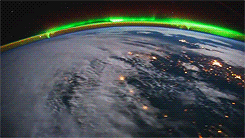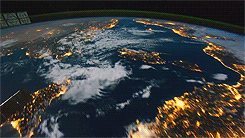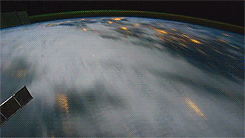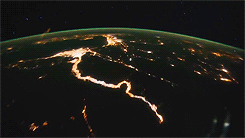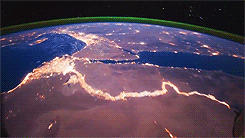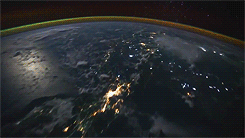Chris Howard's Blog, page 52
December 28, 2018
The clouds and icy rain are here, and I’ve had time to...
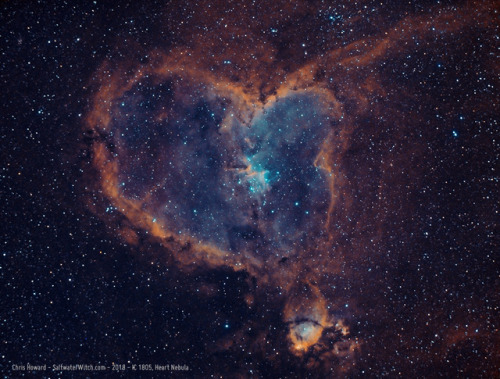
The clouds and icy rain are here, and I’ve had time to process some of the data I captured over the last two nights. Here’s IC 1805 and neighboring nebulae and star clusters in hydrogen-alpha, oxygen 3, sulfur 2 using the Hubble palette (SHO mapped to RGB). The Heart swings around the north celestial pole below the “W” asterism of Cassiopeia, and with trees to the north and the house blocking the view west I don’t have all night to capture data. So, I went with the 11 x 300 seconds of Ha, 21 x 300 seconds of OIII, and 13 x 300 seconds of SII. Equipment: William Optics ZS61 APO refractor, ZWO ASI1600MM-Pro monochrome camera (unity gain 139/21), Astronomik filters, iOptron CEM25P mount, INDI/Ekos/KStars running in Stellarmate/Raspberry Pi 3b+. https://SaltwaterWitch.com
December 27, 2018
Wide-field of M42, the Orion Nebula–and it’s amazing...

Wide-field of M42, the Orion Nebula–and it’s amazing how cloudy and dusty the whole area is. I spent half the night adjusting things–focus distance, off-axis guider spacing, but managed to capture M42 and the surrounding region (two sets of subs: 21 x 300 second, and 20 x 20 second for the bright Nebula core and Trapezium). Calibration frames: 20 Dark and 20 Bias, No flat frames. I shot these with the ZWO ASI1600MM-Pro monochrome camera, Astronomik 12nm Ha filter, William Optics ZS61 APO, iOptron CEM25P mount. https://SaltwaterWitch.com
Heart Nebula again! With intermittent clouds rolling through...
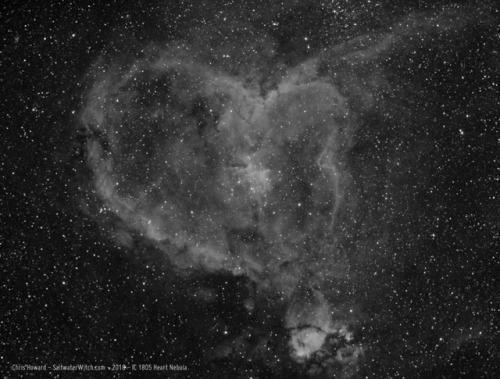
Heart Nebula again! With intermittent clouds rolling through last night it was difficult to stay on one target for long, but I did capture 11 x 300 second hydrogen-alpha frames of IC 1805, the Heart Nebula in the constellation Cassiopeia. This wonderful cloud of ionized hydrogen gas and dust is about 7500 lightyears away, and is made up of a few different nebulae, including the Fish Head (NGC 896) at the bottom, and the cluster of very large stars (some as much as 50 times the size of the sun) in the center (Melotte 15). Equipment: William Optics ZS61 APO refractor, ZWO ASI1600MM-Pro monochrome camera, Astronomik 12nm Ha filter, iOptron CEM25P mount, INDI/Ekos/KStars running in Stellarmate/Raspberry Pi 3b+. https://SaltwaterWitch.com
aileccd:
December 26, 2018
m-4rc:
Almost ready…
December 25, 2018
punkrockmermaid:
Time lapse images of Earth at night taken from...
December 24, 2018
December 23, 2018
Punching down a batch I started this morning. Not sure what...
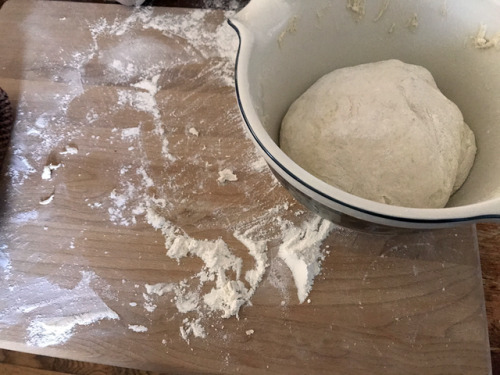
Punching down a batch I started this morning. Not sure what I’m going to do with this dough yet–possibly pizzas or calzones.
December 22, 2018
Heart Nebula with the ZWO ASI071MC Color CMOS Camera - This one...

Heart Nebula with the ZWO ASI071MC Color CMOS Camera - This one of the Heart Nebula (IC 1805) in Cassiopeia is comprised of 27 x 600 second exposures, taken over several nights, with the ZWO ASI071MC and the William Optics GT81 APO refractor, no filters, no calibration frames, stacked in DSS, processed in PSCC 2019. This is pretty impressive for a color camera when you consider the Heart is mostly made up of glowing ionized hydrogen gas and dust (perfect for narrowband imaging), and it’s a relatively dim object–with the exception of NGC 896, the bright “Fish Head Nebula” at the bottom. https://SaltwaterWitch.com
December 21, 2018
loumargi:
The Roses of Heliogabalus is an 1888 painting by the...

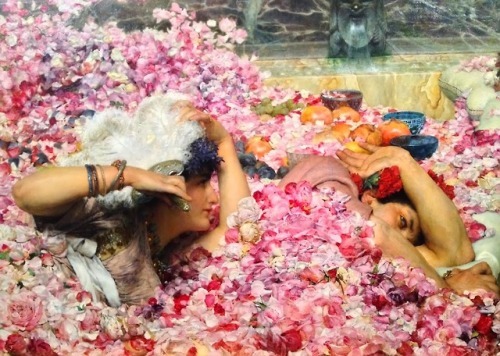





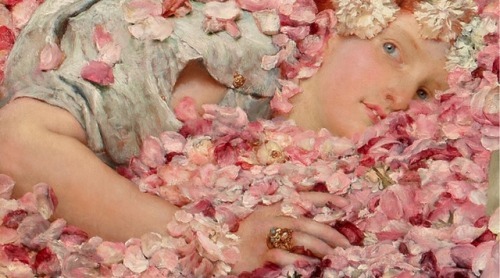
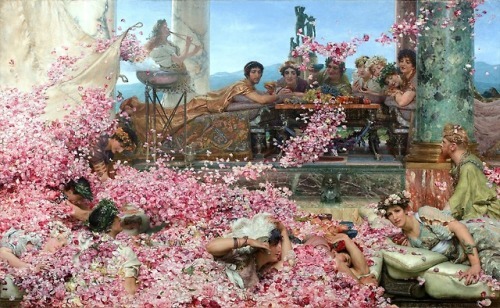
The Roses of Heliogabalus is an 1888 painting by the Dutch-born British artist Sir Lawrence Alma-Tadema (1836-1912).



